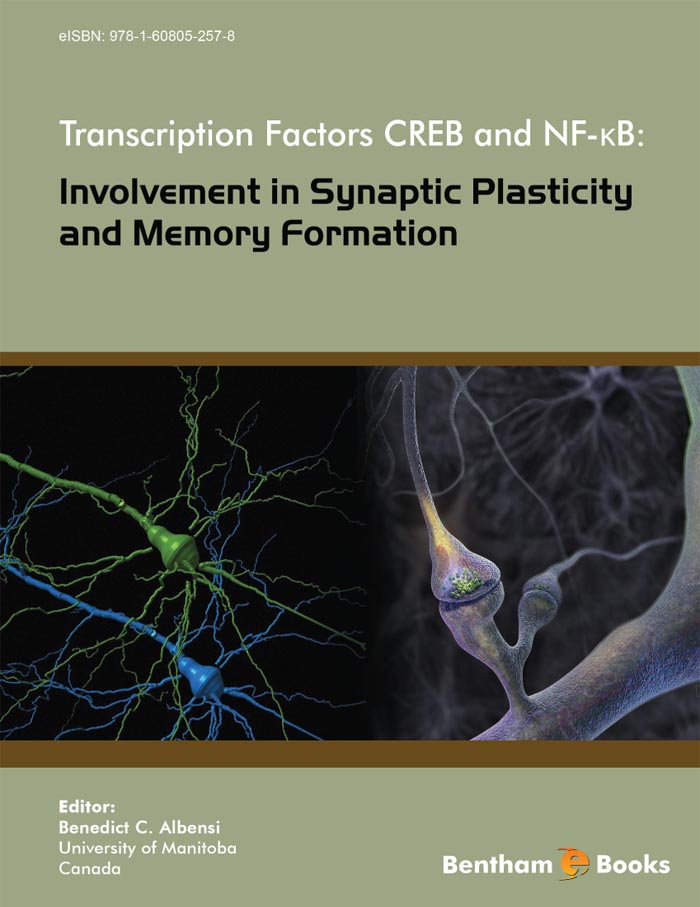Introduction
The main theme of this book is to critically survey the role of two recognized protein molecules (i.e., transcription factors) in processes of human memory. In addition, authors provided recent data from their own labs and provided a perspective relevant to specific neurological diseases and potential drug targets. Historically, the transcription factor cAMP response element-binding (CREB) has been the most well documented transcription factor shown to play a role in memory. CREB has several functions, but its most notable function has to do with the formation of long-term memories. More recently, other transcription factors, such as C/EBP, Egr protein, AP-1, and NF-κB have been implicated in memory as well. Of these, scientific literature on NF-κB’s theorized role in synaptic plasticity and memory is growing rapidly. Interestingly, in some recent studies CREB and NF-κB have also been shown to interact with each other where both contribute in a cooperative fashion to the initiation of gene expression.

